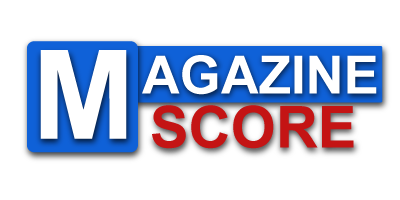In the realm of healthcare, effective training is essential for ensuring the safety and well-being of patients. Two critical areas that require specialized training are peg feed training and epilepsy training. While they serve different purposes, both are vital for providing optimal care. In this article, we’ll explore these training programs, their importance, processes, and how they can benefit both patients and caregivers.
What is Peg Feed Training?
Definition and Purpose
Peg feed training involves teaching caregivers how to administer nutrition through a percutaneous endoscopic gastrostomy (PEG) tube. A PEG tube is inserted into the stomach through the abdominal wall, allowing for direct feeding. This method is crucial for individuals who have difficulty swallowing or are unable to consume food orally. The training ensures that caregivers are competent in handling feeding, preventing complications, and recognizing any potential issues that may arise.
Who Needs Peg Feed Training?
Peg feed training is essential for various groups, including:
- Family members of patients with feeding difficulties.
- Healthcare professionals working in home care or hospital settings.
- Caregivers of elderly patients with conditions affecting swallowing.
- Patients themselves, if capable of learning the process.
Importance of Peg Feed Training
Proper peg feed training is not just about feeding; it encompasses a broader understanding of patient care.
Benefits for Patients
- Nutritional Support: Patients receive the necessary nutrients to maintain health and wellness.
- Quality of Life: Effective feeding can improve overall quality of life by alleviating hunger and related discomfort.
- Safety: Trained caregivers can reduce the risk of aspiration, infections, and other complications associated with improper feeding techniques.
Benefits for Caregivers
- Confidence: Training equips caregivers with the knowledge and skills to perform feeding procedures safely.
- Responsibility: Understanding the feeding process allows caregivers to take an active role in patient care.
- Effective Communication: Training enhances communication between caregivers and healthcare professionals, ensuring that everyone is on the same page.
The Peg Feed Training Process
Now, let’s delve into the peg feed training process and what it entails.
Step-by-Step Guide
Initial Assessment
The first step in peg feed training is assessing the patient’s needs. Healthcare professionals will evaluate the individual’s medical history, current health status, and specific dietary requirements. This assessment helps tailor the training to address the unique needs of each patient.
Equipment Familiarization
Caregivers need to become familiar with the equipment used for peg feeding. This includes understanding the different types of PEG tubes, feeding pumps, and nutritional formulas. Hands-on practice with the equipment ensures caregivers are confident in its use.
Hands-on Practice
Once caregivers are familiar with the equipment, they engage in hands-on practice. This practice involves learning how to:
- Prepare the feeding formula.
- Administer the feed correctly through the PEG tube.
- Monitor the patient during feeding.
- Respond to potential complications, such as blockage or discomfort.
Understanding Epilepsy Training
What is Epilepsy?
Epilepsy is a neurological disorder characterized by recurrent seizures. These seizures can vary in severity and frequency, impacting an individual’s daily life. Understanding epilepsy and its implications is crucial for anyone involved in the care of a person with this condition.
Importance of Epilepsy Training
Epilepsy training is vital for caregivers, educators, and even family members to ensure that they can effectively respond to seizure episodes.
- Safety First: Knowing how to react during a seizure can prevent injuries.
- Medication Management: Understanding the medications used to treat epilepsy is crucial for caregivers.
- Support Systems: Training helps caregivers create a supportive environment for individuals with epilepsy, enhancing their quality of life.
Types of Epilepsy Training
Epilepsy training can be categorized into several types to address different needs.
Basic Awareness Training
This training provides foundational knowledge about epilepsy, including the types of seizures, triggers, and first aid measures. It’s ideal for family members, friends, and community members who want to support someone with epilepsy.
Advanced Seizure Management Training
For healthcare professionals and caregivers, advanced training offers in-depth information about managing epilepsy. This includes medication administration, recognizing seizure patterns, and coordinating care with healthcare providers.
The Epilepsy Training Process
Just like peg feed training, epilepsy training involves a systematic approach.
Step-by-Step Guide
Recognizing Seizures
The first step in epilepsy training is learning to recognize different types of seizures. Understanding what to look for can be crucial for providing timely assistance.
- Tonic-Clonic Seizures: These involve loss of consciousness and muscle stiffening.
- Absence Seizures: Characterized by brief lapses in awareness.
- Focal Seizures: Seizures that begin in one area of the brain and may or may not lead to a loss of consciousness.
First Aid for Seizures
After recognizing seizures, caregivers must know how to respond. First aid training includes:
- Stay Calm: Reassuring others is essential.
- Move Dangerous Objects: Clearing the area can prevent injuries.
- Time the Seizure: Monitoring duration helps in emergency response.
Medication Management
Caregivers need to understand how to manage epilepsy medications, including:
- Administration: Knowing the proper timing and dosage.
- Side Effects: Recognizing and addressing any adverse reactions.
- Communication: Coordinating with healthcare providers about the patient’s condition and medication needs.
Combining Peg Feed and Epilepsy Training
Both peg feed training and epilepsy training complement each other in providing holistic care. For instance, individuals who require peg feeding may also have epilepsy, making it crucial for caregivers to be proficient in both areas.
Understanding how to manage feeding and seizure responses can significantly improve the quality of care provided. By equipping caregivers with skills in both domains, we enhance patient safety and well-being.
Conclusion
Peg feed training and epilepsy training are essential components of modern healthcare. They empower caregivers with the skills and knowledge needed to provide effective and compassionate care for individuals with complex medical needs. By prioritizing training in these areas, we ensure that patients receive the best possible support, leading to improved health outcomes and quality of life. Investing in such training is not just beneficial but crucial for creating a safe and nurturing environment for all individuals in need of specialized care.








